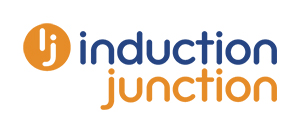The right brief is just the starting point.
It’s exciting when you make the decision to turn some of your exist training content into a digital product – whether that is a series of explainer videos, an e-learning course or a fully-immersive virtual reality experience – it’s big shakes.
Taking the time to craft a decent brief though before you get stuck in will pay dividends through, so here are our top 5 tips to help you set off on the right footing.
1. Know the purpose.
Knowing why you are getting this e-learning product developed is a really important part of helping developers see why they should engage with it. It seems obvious that before investing time and money in this development work you will know why you are doing it, but this check-in is worthwhile. You want to be able to get the magnitude of the project (however small) across AND get the developer excited.
2. Write the brief as a specification.
Do not assume when you write the brief, that the developers will get what you mean. Sure they may have many e-learning projects similar to yours under their belts, but yours will be unique in its own way and being as specific as you can be will mean you are more likely to get an accurate proposal of cost and timeline.
Describe the associated systems you already in place to support the content, such as an existing learning management system (or e-commerce facility if you have one).
Outline the e-learning content that you already have in your ownership, images, video, scoring mechanisms, data sets, infographics, assessment questions, any prior held endorsements or copy for example. Check that licences, copyright and ownership are fully yours.
3. Declare the outline budget and timescale you are working to.
We would always recommend that you seek proposals from multiple developers anyway, and recognise that you may not wish to give the budget amount away, as you’ll be keen to use this competition to see what the best value is. However, by including an outline figure of budget and timescale you may rule certain developers out early. This is useful for both them and you, and avoids time-wasting down the line.
Sometimes your timescales may mean that an otherwise keen developer may not be able to devote the right amount of time to your e-learning project, so if you have flexibility on timescale do indicate this.
4. Pay mind to what happens afterwards.
Consider what support you may want once the e-learning product is ready to go live. Will the developer supply a link, and that’s it? Will there be annual maintenance fee, and will there be any support at all should the link stop working? Will this align to the business operating hours or be 24/7? Will it be your responsibility, or come under the responsibility of your learning management system provider? The last thing you will want is to have paid for bespoke content and have no recourse should you, or a customer/employee/member need support.
5. Don’t go it alone! Use an impartial broker.
One thing is for sure – whether you know where to start or not, once you do you will open the flood gates to numerous developers sending show-reels, asking more questions and wanting to show demos, so you do need to make sure you time and effort resources match. When this type of project is an add-on to the usual day-to-day, the proper briefing, sourcing, due diligence, seeking demonstrations and taking references etc. all risk being shortcut for pragmatic reasons. If you are not in control then the developers will be – you may end up going for the best sold solution rather than the best suited solution.
If an extra pair of e-learning expert hands in your corner would help, then you could always work with a broker like us. We’ll help shape your brief, even if that means talking to other stakeholders. We’ll have lots of questions to ask you to help you think about what you really need your solution to achieve for you, and we’ll go away and research the market based solely on your brief, whilst you get on with other stuff. We won’t need to shortcut, because we won’t be juggling this research with umpteen other conflicting priorities. We’ll then come back to you with a short-list of potential developers who meet your specification, laid out in a comparable report, and we’ll help you through the next steps too. Contact us to find out more.




One thought on “5 things to consider when writing an e-learning brief for a developer”
Comments are closed.